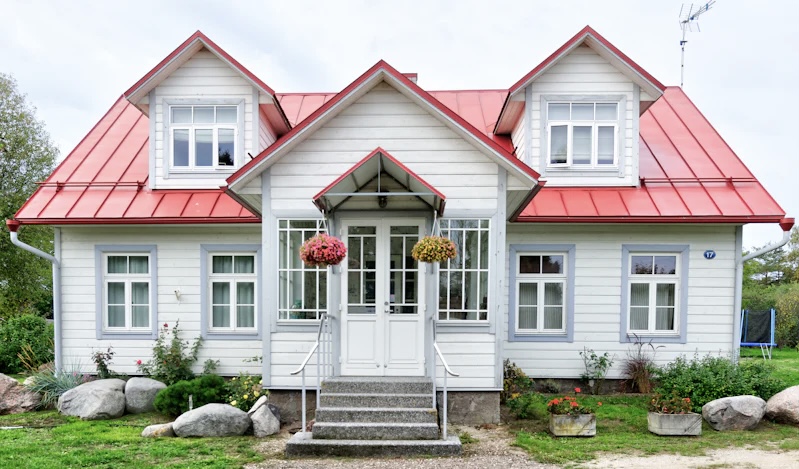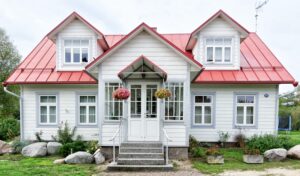
Aging in place requires planning and preparation.
The cinematic classic The Wizard of Oz states a simple truth, "There is no place like home."
The familiarity of being in your own space and your own room is more than comforting.
Whether returning from vacation, work, or a trip to the grocery store, walking through your front door is a wonderful feeling.
According to a recent Housing Wire article titled "Majority of older homeowners plan to stay in their home as they age," most senior American homeowners seem to share this sentiment.
The article cited the results of a Redfin survey, which found that 78 percent of homeowner respondents age 60 and above shared that they planned to remain in their houses as they age.
People may have various reasons for this inclination, such as emotional attachment to their homes, desire for familiar surroundings, and financial incentives.
I do not like to move.
Period.
In fact, the evening after we completed the move into our office/home 21 years ago this coming August, I announced to Gretchen that my next move would be "feet first" out the front door!
For those with no mortgages or lower mortgage rates, staying home is more appealing, while a newer home or assisted living community could result in higher monthly payments.
And who wants or needs a mortgage when retired and on a fixed income?
Yikes!

Stairs and multiple levels can complicate aging in place.
While many older Americans prefer aging in place, they still must take steps to make this possible.
As mobility declines, the current home will need to accommodate failing health.
Staying at home will require individuals to consider how their decisions affect personal safety, finances, and healthcare.
While those who prefer aging in place may need to hire help with house cleaning and yard work as they age, the financial cost of assisted living or long-term care facilities will likely still be higher than simply living at home.
Even so, financials are not the only considerations.
Those with significant medical needs may need to prioritize their healthcare over their desire to age at home.
This will be especially true for homes without wheelchair accessibility or other assistive mobility devices.
If this describes you, discuss your needs and options with your physician.
Updating your home can help you achieve the goal of aging in place.
You can work with professionals and seek information on creating a functional and appealing space so you do not have to relocate simply because you have had more birthdays.
There is no one-size-fits-all solution for aging at home.
Some may want to renovate, while others want to move to a different space.
Those who raised numerous children may need (and want) less space after their children have grown up and left home.
They may save money by selling the family home and building a smaller house to meet their aging needs.
Some may find selling and building a smaller home more cost-effective than retrofitting their older home.
Those aging in place should incorporate certain features into their remodel or rebuild.
What are these?
Create an entry where there are no steps.
Having a ramp instead will reduce the chances of tripping and will support wheelchair accessibility.
Stairs can be highly hazardous for those who take medications that impact their balance or who must use a cane or a walker.
In these instances, having a single-story home will be necessary.
As joints become weaker and more inflamed, levers rather than knobs will be better for door handles and faucets as they are easier to turn.
To accommodate wheelchairs, interior and exterior doorways should be at least 36 inches wide, and hallways should be at least 48 inches wide.
Switches and outlets should be accessible from standing or sitting rather than crouching.
The height of the counters will likely vary by situation, so you should talk with your contractor about what your needs are or will be.
Generally, lower sinks in bathrooms and kitchens are more accessible and safer.
A commonly recommended height is 30 inches with open space underneath.
Showers should require no steps to enter.
When selecting a contractor, confirm this individual is familiar with and uses the Aging-in-Place Remodeling Checklist of the National Association of Home Builders.
Aging in place is a notable trend for older Americans.
The decision on where to live in retirement will depend on financial, medical, and safety factors.
Whether you are remodeling or building a new home, you should work with professionals familiar with requirements for aging individuals to ensure your needs are met.
In conclusion, aging in place can be cost-effective, even with remodeling expenses.
It will be essential to speak with your doctor, estate planning attorney, financial planner, and other professionals to determine the best option for you as you age.
This post is for informational purposes only and does not provide legal advice. You should contact an attorney for advice concerning any particular issue or problem. Nothing herein creates an attorney-client relationship between Harvest Law KC and the reader.
References: HousingWire (April 2, 2024) "Majority of older homeowners plan to stay in their home as they age"
National Association of Home Builders "Aging-In-Place Remodeling Checklist"
REMEMBER: “The choice of a lawyer is an important decision and should not be based solely upon advertisements.”
This statement is required by rule of the Supreme Court of Missouri.
